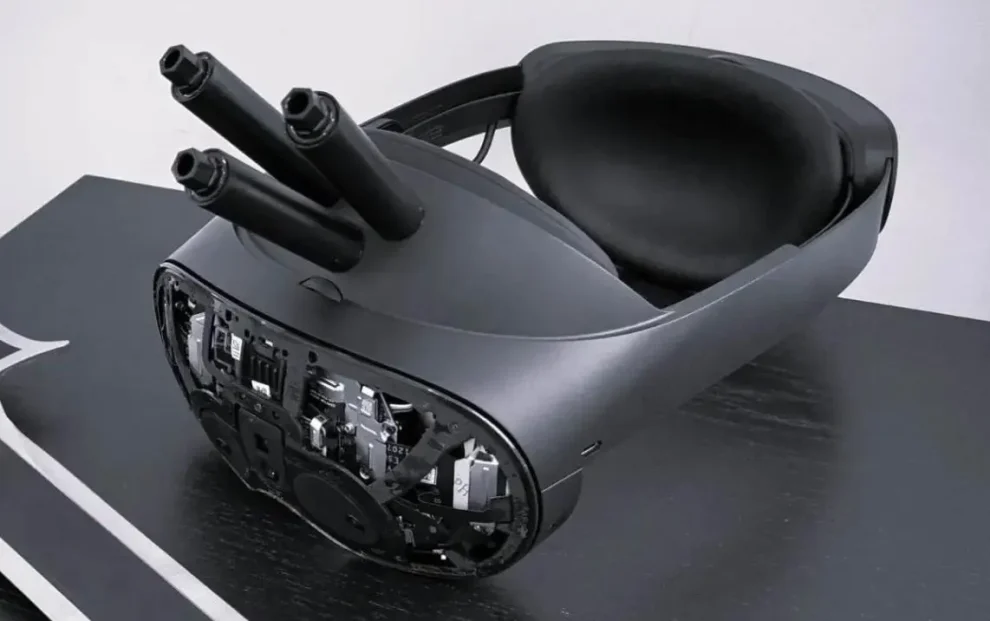From Rift to Rails: Luckey’s Duality
Luckey’s history in VR is well-known. He co-founded Oculus, a company that popularized VR with the Oculus Rift headset. However, his departure from Facebook (now Meta) in 2017 was shrouded in controversy due to his political views. Now, with Anduril, Luckey focuses on developing defense technologies, including drones and AI systems. The IA headset represents a curious convergence of these two sides of Luckey’s career—cutting-edge VR tech with a distinctly military flavor.
Built for Battle: Unveiling the IA’s Potential Military Uses
Details about the IA are scarce, but speculation suggests it prioritizes ruggedness, durability, and high-fidelity visuals needed for military simulations and training. Imagine soldiers navigating realistic virtual battlefields, practicing complex maneuvers, or even conducting medical procedures in a safe, controlled VR environment. The IA’s potential for military applications is undeniable, offering significant advantages over traditional training methods.
Beyond the Battlefield: Civilian Applications Up in the Air
While the military focus is clear, Luckey remains tight-lipped about civilian applications. Some possibilities include industrial training for hazardous environments, remote surgery assistance with enhanced visualization, or even physical therapy with immersive rehabilitation programs. However, these applications remain hypothetical, and the IA’s design, heavily influenced by military needs, might not translate seamlessly to the civilian world.
Aesthetics vs. Accessibility: Can the IA be Civilised?
A key concern is whether the IA can shed its military shell for civilian use. Military-grade VR headsets often prioritize durability and functionality over aesthetics and user comfort. The IA might be bulky, uncomfortable for extended use, and lack the intuitive design elements found in consumer VR headsets. This could alienate potential civilian users accustomed to the sleek designs of consumer VR products.
The Ethical Tightrope: Balancing Innovation with Responsibility
The ethical implications of such technology also deserve scrutiny. Imagine a high-fidelity VR experience that blurs the lines between simulation and reality. Could this potentially lead to desensitization to violence or psychological trauma for military personnel undergoing VR training? Additionally, the potential for civilian misuse of such advanced VR technology, particularly in areas like surveillance or psychological manipulation, needs careful consideration.
A Fork in the Road: Can Luckey Bridge the Gap?
The success of the IA hinges on Luckey’s ability to navigate these complexities. He needs to demonstrate a clear path for civilian applications that goes beyond mere marketing speak. Additionally, addressing ethical concerns and working with regulatory bodies will be crucial for the responsible development and deployment of this technology.
The Deadlift Challenge: Can the IA Avoid a Civilian Flop?
The IA faces a significant “deadlift” – can it overcome its military origins and find a foothold in the civilian VR market? This requires careful design choices, a focus on user experience, and a transparent approach to ethical considerations. If Luckey can pull this off, the IA could become a valuable tool for both military and civilian applications. However, if the IA remains a glorified military simulator with limited civilian appeal, it might end up gathering dust on the shelves of history, another footnote in Luckey’s intriguing, yet controversial, career.
The Future of VR: Beyond the Battlefield
The IA serves as a microcosm of the larger debate surrounding VR technology. As VR continues to evolve, the challenge lies not just in creating powerful hardware, but also in ensuring responsible development and ethical considerations for both military and civilian applications. Only then can VR truly fulfill its potential to revolutionize various aspects of our lives.
















Add Comment